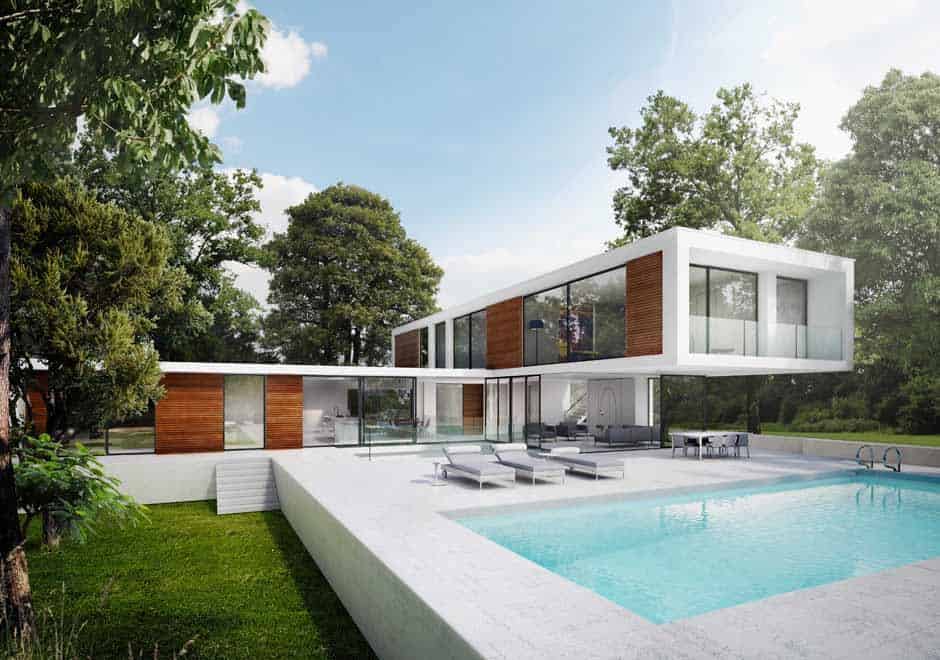BLOG
INTERESTING STUFF
THAT CAUGHT OUR EYE
Guest Expert: How to Build a Home That’s Lean, Clean and Green

Ross Standaloft is director of Green Tigers Sustainability, and has worked in the field of sustainable building policy and design for more then a decade. Ross and his team have helped many of our projects meet or exceed increasingly tough carbon emission targets, and even build some of the most green homes in the country. We asked him to share the core principles of sustainable, efficient residential design.
You may have heard of the Code for Sustainable Homes, which used to set the efficiency and sustainability targets for residential developments. This detailed assessment of a building’s energy and water usage (along with a range of smaller details) was unceremoniously scrapped in 2015 with nothing lined up to replace it.
Now, councils set their own sustainability targets, determined by estimated carbon emissions of a property. In much of the country, you simply need to meet building regulations, but in London and other urban or protected areas, carbon emissions need to be 19% lower than building regulations.
There are certain boroughs, such as Richmond or Camden, which set an even stricter targets, as high as 35%.
This change means that there are less details to worry about now, but the most difficult part of Code for Sustainable Homes – sustainability and efficiency – is as tough as ever.
As with all aspects of construction, it’s much easier and cheaper to plan and implement sustainable design and equipment during development than having to retrofit it afterwards when you discover that you fall short of targets. This is where sustainability consultants such as myself come in.
We use a three part process called Lean, Clean and Green during the design of a building – along with regular checks during its development – to ensure that it meets or exceeds the targets set by the local planning department.
Step One: Lean
Our first step is to make sure that the external envelope of the building (the walls, floors, roof, doors, windows and so on) is as robust as possible to prevent the heat generated from within the building from escaping and to stop cold getting inside, whether from unwanted air flow or from heat conduction through materials.
Constructing a well-insulated, airtight envelope is at the heart of sustainable design. The less work the mechanical and electrical services have to do, the less expensive the building is to run.
But you can’t just stuff as much insulation as possible into all the walls because this will begin to encroach on the available floor space. From an investment perspective, floor space is the most valued metric of a building’s worth, so ideally you’re going to eat into that as little as you can.
Instead, a thermally-efficient envelope is better achieved through a fastidious attention to detail across all aspects of the design and the use of highly efficient, lightweight insulated materials that are just as sturdy as solid brick or concrete.
Next are the building services, such as heating and ventilation.
Intelligent heating controls and thermostats have made it easier than ever to efficiently heat a home, with individual thermostats in each room which ensure heat isn’t being wasted in a space which isn’t being used, as well as smart controls which allow remote control of heating, even when you’re away from home.
An airtight, well insulated fabric will make sure the money you’ve spent heating your home doesn’t go to waste, but without ventilation you will expose yourself and your home to a whole other range of problems.
Homes that are sealed up without any consideration for ventilation quickly fill up with condensation and mould, as you’ve likely encountered in some of London’s Victorian housing stock that have been subject to heavy-handed efficiency “improvements”.
Instead of opening up windows or relying on old fashioned trickle vents, you can enjoy fresh air while maintaining a constant internal temperature by installing a MVHR (mechanical ventilation with heat recovery) unit.
MVHR units transfer the heat from warm air being pumped out of the building to the cold air being brought in, giving you a steady flow of fresh air that’s pre-heated to room temperature with minimal running costs as it’s recycling heat you’ve already generated.
As you can imagine, achieving a lean building envelop is much easier in a new build. Targets are typically lower in renovations of existing builds, but even then it is sometimes more cost-effective to simply knock down a building and rebuild a thermally efficient replacement than attempt to improve the existing fabric.
 Strawberry Vale, which met Code for Sustainable Homes Level 5, achieved a 40% CO2 reduction over building regulations and Richmond Council’s Sustainability Construction Checklist, is a standout example of green home building.
Strawberry Vale, which met Code for Sustainable Homes Level 5, achieved a 40% CO2 reduction over building regulations and Richmond Council’s Sustainability Construction Checklist, is a standout example of green home building.
Step Two: Clean
This is the shortest section of the methodology, where we assess whether a developments is suitable for the generation of clean energy through a CHP (combined heat and power) unit, which is essentially a gas boiler with an engine on it which generates both heat and electricity and uses excess energy from one to power the other.
For example, if you need hot water, excess heat in the boiler that would otherwise be wasted is used to generate electricity, or if you need electricity, the excess heat produced by the generation of electricity is used to provide heating.
By making use of energy that would otherwise go to waste, CHP units are able to achieve incredible efficiency ratings. However, CHP units are only worthwhile where there is significant hot water demand, far beyond that of most single dwellings, so they’re typically only used in blocks of flats, commercial developments or homes with large, heated pools.
Step Three: Green
Finally, we find ways to generate on-site renewable “green” energy, typically through the use of PV (photovoltaic) panels, which convert sunlight into electricity, or air source heat pumps, which take energy out of the air and use it to pre-heat water.
The upfront costs of renewable energy sources is high, so it’s important to make a building as thermally efficient as possible before having to rely on renewables to hit your target.
Hopefully, by the time we’re considering green energy generation, we’ve already made progress towards our sustainability targets through the Lean and Clean stages, with Green used to push us over the finish line. Otherwise, you’ll find yourself having to throw a lot of money at the problem to make it go away.
Get in touch if you have any questions
Sustainable design and construction is endlessly complex, and no two sites are the same, so if you have any questions about your home, local green building policy or how we can help, feel free to get in touch with Green Tigers at [email protected].
